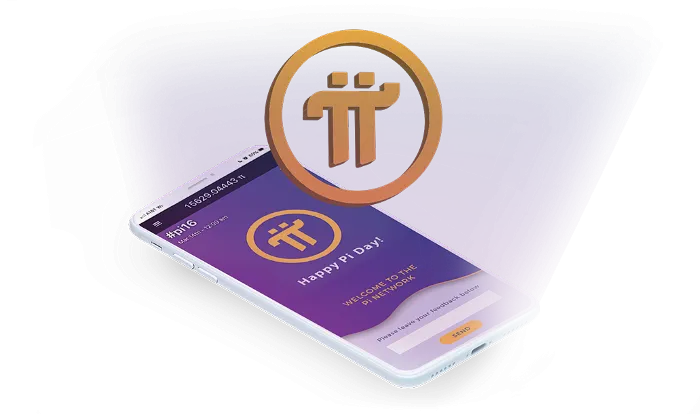}

As the world becomes more and more digital, cryptocurrency is the next natural step in the evolution of money. Pi Network (PI) is one of the first cryptocurrencies for ordinary people, representing an important step forward in the adoption of cryptocurrencies around the world.
The Pi Network was launched in Pi day of 2019 (14/03/2019) by three Stanford PhDs and graduates (Nicolas Kokkalis Ph.D., Chengdiao Fan Ph.D., Vince McPhilip M.B.A.) and within a few months gained popularity among users.
PI, planning to work on the Stellar Consensus Protocol, now has over 7 million mobile miners. The breakneck speed of Pi’s adoption across a diverse, global user-base reveals the expanding interest in cryptocurrency and the public desire to participate in a more inclusive digital economy.
While mining crypto is hard and investing in crypto is risky, Pi Network makes crypto mining easy! The many of us who are left out of the cryptocurrency revolution, we may now have another chance!
Pi Network allows users to mine PI from any mobile device without draining their battery or using up data. This is the result of cryptocurrency evolution in general. PI coins are completely eco-friendly. Pi Network uses Proof-of-Work without the need to burn massive amounts of electricity as opposed to Bitcoin that is starting to become old-fashioned as it requires a lot of electricity.
The project is still in BETA which means that there will still be errors and some details of the project are still changing. While many cryptocurrency projects start from pure theory, Pi Network seeks to balance theory with design and people-centered (or experiment with real people to best meet their needs).
The project appreciates your patience and welcomes your input as we work together to develop products that best meet community needs. Pi does NOT give you free money. This is a long-term project whose success depends on the common contribution of its members. Pi helps people capture economic value, which is held by banks, technology giants (e.g. Facebook, Amazon) and other intermediaries. Pi depends on the contribution of the members. Therefore Pi Network is not suitable for those who are looking for quick money.
The Pi Network Core Team
Pi Network was launched on Pi day (3/14/2019) by a group of Stanford PhDs and graduates, Nicolas Kokkalis Ph.D., Chengdiao Fan Ph.D., Vince McPhilip M.B.A

Dr. Nicolas Kokkalis
Head of Technology
Stanford PhD and instructor of Stanford’s first decentralized applications class; combining distributed systems and human-computer interaction to bring cryptocurrency to everyday people.

Dr. Chengdiao Fan
Head of Product
Stanford PhD in Computational Anthropology harnessing social computing to unlock human potential on a global scale.

Vincent McPhillip
Head of Community
Yale and Stanford-trained social movement builder on a mission to democratize how society defines, creates, and distributes wealth.
How it works
Instead of relying on the energy-intensive algorithm used by Bitcoin to verify users, Pi secures its ledger when members vouch for each other as trustworthy. By using social “Security Circles” instead of an intense algorithm.
Pi can be used through a free application on a typical smartphone. These interlocking “Security Circles” create a global trust graph showing who can be trusted to record transactions.
This approach allows users to contribute to crypto mining directly from their phone by leveraging their existing social connections, with no financial cost, minimum battery drain and a lighter footprint on the planet.
The Protocol
The Pi Core team set out to find a way that would allow ordinary people to mine. To accomplish this, they chose to build the Consensus Algorithm on top of Stellar Consensus Protocol (SCP), which is Implemented within the Stellar Network.
Stellar Consensus Protocol (SCP) was created by David Mazières a professor of Computer Science at Stanford who is also a Chief Scientist at the Stellar Development Foundation. SCP uses a novel mechanism called Federated Byzantine Agreements to ensure that updates to a distributed ledger are accurate and trustworthy. SCP is deployed through the Stellar blockchain.
However, the Stellar Network consists mostly of companies and institutions as nodes. In contrast, Pi lets devices of individuals contribute to the protocol level and get rewarded. This includes mobile phones, laptops and computers.
Opposed to bitcoin where only one miner is able to validate the transaction and get rewards for it, several nodes in Pi validating the transaction make sure that the computing power is distributed. Hence, unlike bitcoin mining where a single miner has to deploy as much computing power as possible, computing power in Pi Network is far less than required for bitcoin mining.
How to Join
For a limited time, you can join the beta by invitation only to mine Pi for free and help in the growth of the network. To join the Pi network, download the free app from Pi network’s official site : https://minepi.com/Bitcome and use Bitcome as your invitation code during your registration.
Please note that by using the invitation code Bitcome you will be joining my earning team of over 220 pioneers at the time of writing this post and you will be able to receive additional support through the teams chat from within the app.
If you want to dig deeper, on Pi Network's official site you will also find the White Paper and and an FAQ section in different languages covering the basics.
In the next couple of months the first international convention of Pi Network will take place that will be held online due to COVID-19 . This will be a great opportunity for new members to find all about Pi Network from the founders as well as from valued members of the cryptocurrency community!
If you need any futher help or guidance to get started with the Pi Network please post a comment bellow! :)